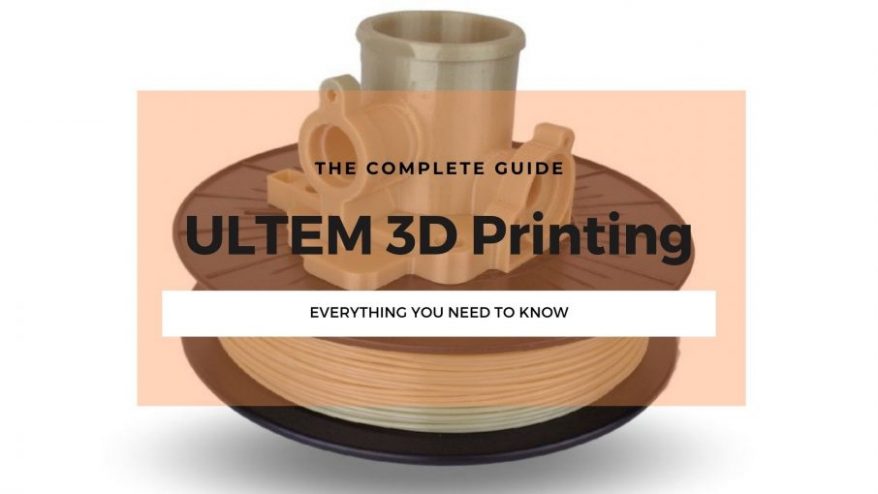
ULTEM has manufactured itself a useful place as an industrial 3D printer filament. Ultem holds its own with PEEK in strength and durability despite being much cheaper. It is a favorite for industrial manufacturers looking to cut costs.
See also: we also have a ranking of the best Ultem & PEEK 3D printers.
The History of ULTEM / PEI Filament 3D Printing
ULTEM is a brand name for Polyetherimide (PEI). PEI was developed by Joseph G. Wirth at General Electric’s Plastics Division in the 1980s, and marketed under the brand name ULTEM. In 2007, GE sold the division to SABIC, a Saudi-based manufacturer, who have been producing it ever since.
UTLEM’s properties make it a handy material for professional and commercial 3D printing. It is non-toxic and biocompatible, which makes it incredibly useful in medical applications. It also has a high tensile strength and is corrosion resistant against a range of damaging substances, making it incredibly durable.
It is also highly heat resistant, up to 340°C. Combining these factors with the fact it is biocompatible, and ULTEM is one of the most versatile thermoplastics on the market.
ULTEM / PEI filament belongs to the same family of plastics as Polyetheretherketone (PEEK), another popular 3D printing filament. The two share many properties, but there are also a number of key differentiations between them.
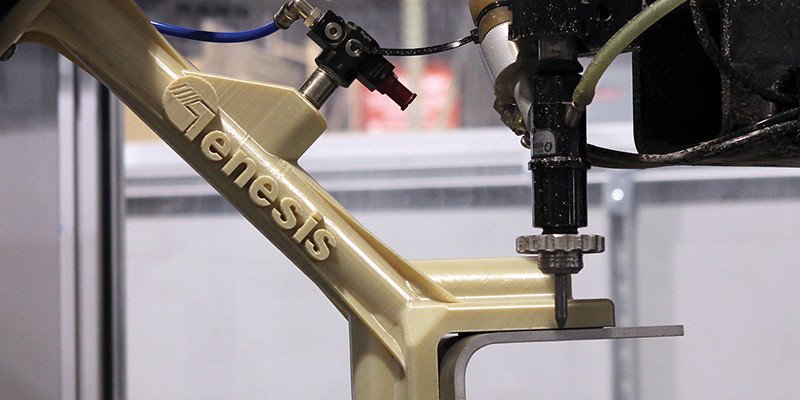
The Difference Between ULTEM and PEEK Filaments
Simply, ULTEM is PEEK’s baby brother. The two have very similar properties like their heat resistance, chemical resistance, and tensile strength, but PEEK is stronger in all of these aspects.
Both PEEK and ULTEM are highly resistant to moisture deformation, and do not produce smoke when burned, making them useful in high-temperature situations. They are both stress and crack resistant and are both very stiff, meaning they do not snap or shatter.
But while they are both renowned for their strength, PEEK outstrips ULTEM. It is a very popular 3D printing polymer because the parts are incredibly durable, and while ULTEM is no slouch in the strength department, it cannot hold a candle to PEEK.
PEEK is also far more friction resistant, meaning it can be used in heavy industry where it can withstand lots of abrasive contact.
However, this does not mean that ULTEM is completely useless. Far from it. Being slightly less temperature resistant, ULTEM is far easier to print, where PEEK’s higher temperature resistance works against it.
And the biggest feather in ULTEM’s cap is its price. PEEK is one of the most expensive 3D printing filaments around, but ULTEM filaments cost much less. We’ll explore ULTEM prices versus other thermoplastics later in the article.
For those looking to get into ULTEM 3D printing, what types of ULTEM filaments are available?
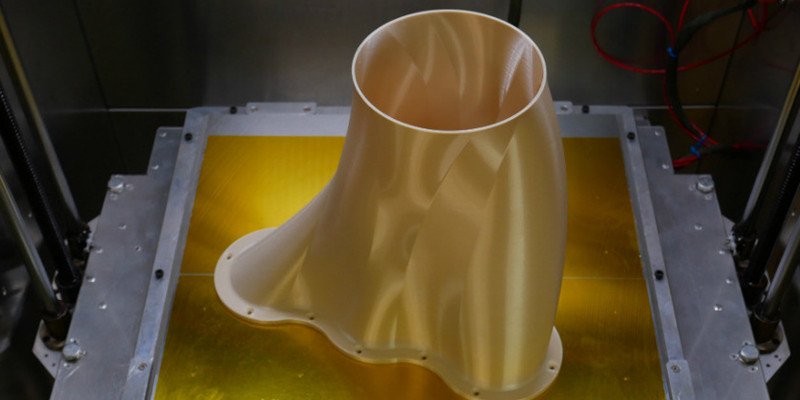
ULTEM 1010 vs ULTEM 9085
SABIC offers two resin-based ULTEM filaments. ULTEM 1010, and ULTEM 9085. They both possess many of the same properties, but exceed each other in a few key ways.
ULTEM 1010 is the stronger of the two, and has a higher chemical resistance. It is also slightly more heat resistant, and therefore is less prone to thermal expansion that could damage the part.
ULTEM 9085 on the other hand, is a more accommodating material. It is bendier and ductile, making it useful for electrical applications where some controlled flexibility is required, like machining tools.
It is important to assess your project beforehand and decide which ULTEM variant is better for you.
ULTEM 3D Printing Best Practices
- ULTEM extruder temperature: 350°C- 380°C
- ULTEM heated bed temperature: 140°C- 160°C
While being easier to process than PEEK, ULTEM filaments can still be very tricky. There are a few considerations to make in order to get the best results.
High Heat
The high heat resistance of ULTEM means that it requires a very high extruder and bed temperature to get good results. Some say to set the extruder as high as 400°C, although the consensus is somewhere around the 360°C mark. It is also better to use a heated chamber and to set the bed temperature high as well for the same reason.
Regardless, if it is your first time 3D printing ULTEM, it is advisable to start higher. Low heat can cause the plastic to melt improperly and clog in the extruder.
Similarly, setting the bed temperature too low makes it difficult for the material to adhere to the printer bed, ruining your print.
Decrease the temperature over multiple attempts as you feel more confident, but it’s better to be safe than sorry.
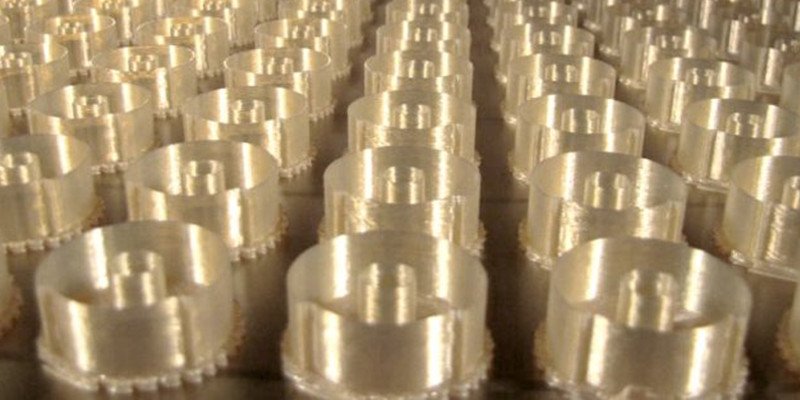
Careful Drying
Cooling and drying your ULTEM part can be a difficult business. Doing this too quickly can cause the part to warp and become deformed, so a cautious approach is best.
Drying out the part in an oven at 140°C for 4 hours will help to prevent deformities and give you the best performance. Some ULTEM 3D printers have cooldown chambers built in, but for those that do not, a regular oven will suffice. This will give you the added bonus of staggering the cooldown time of the part.
Do Not Use Fans
It is very important when printing with ULTEM to keep the heat as high as possible. So, if you have them, do not use the extractor fans on your 3D printer.
ULTEM does not produce a lot of toxic fumes when printing, so this should not be too much of a hazard, but do not be tempted to put them on by the high heat.
You should print in an enclosed 3D printer with a heated build chamber in order to keep that temperature high.
It is also advised to use a charcoal or carbon filter when printing as well if you can. These are very good at removing Volatile Organic Compounds (VOCs) that are produced when melting plastic from the build chamber.
This will help to keep the purity of the plastic intact and stop any pollution of the material that could weaken it later.
How Much Does ULTEM 3D Printing Cost?
ULTEM’s main advantage over other thermoplastics is the reduced price. ULTEM 9085 filaments cost around $250 per kilogram, whereas ULTEM 1010 is slightly less at $225 per kilogram. This is significantly less than PEEK which costs upwards of $350 per kilogram.
We recommend some of the following filaments:
- PEI filament selection available on Matterhackers
- ULTEM filament range available on Dynamism
- 3DXTech ULTEM filament range available on Amazon
ULTEM 3D Printing Applications
Transportation and Aerospace
Both ULTEM 1010 and 9085 have found uses in the transportation and aerospace industries through 3D printing. Additive manufacturing has been proven to reduce waste material and lower costs from traditional manufacturing methods, namely injection molding, especially for short-run parts.
In transport and aerospace specifically, 3D printing using ULTEM also reduces the weight of the part by printing material at a lower density percentage, reducing fuel consumption and saving money.
For this reason, many manufacturers use ULTEM to produce oil pump components, ventilation systems, gearbox parts and sensor housings. Some plane manufacturers also use it to make clips and joints between components.
As ULTEM is highly grease and chemical resistant, it is a resilient material that can withstand a lot of wearing damage caused by the machinery.
Canadian railway manufacturing company, Bombardier, have begun using 3D printing to reduce production times and costs on a range of their parts, including using ULTEM. These parts have already begun being implemented across their rail and metro networks across Europe.
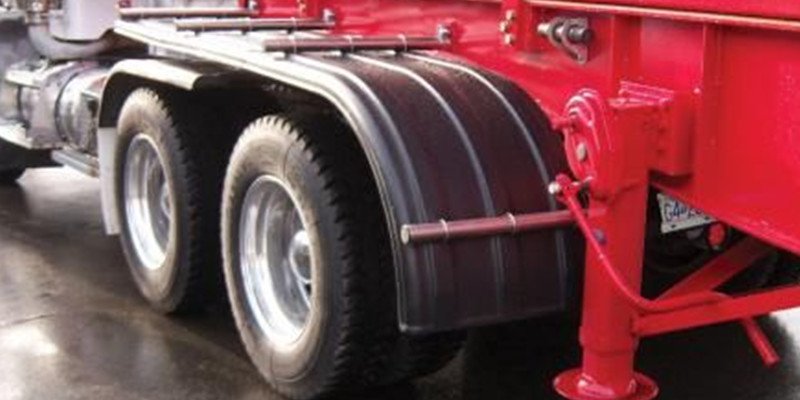
Tooling
The grease and wear resistance that makes ULTEM so useful in transport also gives it applications in manufacturing and tooling.
ULTEM is used in the production of jigs, fixtures and end-of-arm tools in the production of traditional manufacturing equipment, and 3D printing not only makes this cheaper, but also allows for fast and cheap replacement of parts should they break.
ULTEM’s heat resistance also means that it can be used to 3D print composite molds for injection molding at a fraction of the cost of other methods.
For hobbyists and DIY enthusiasts, using 3D printing to make their own tool parts is a huge benefit that will make all manufacturing more accessible.
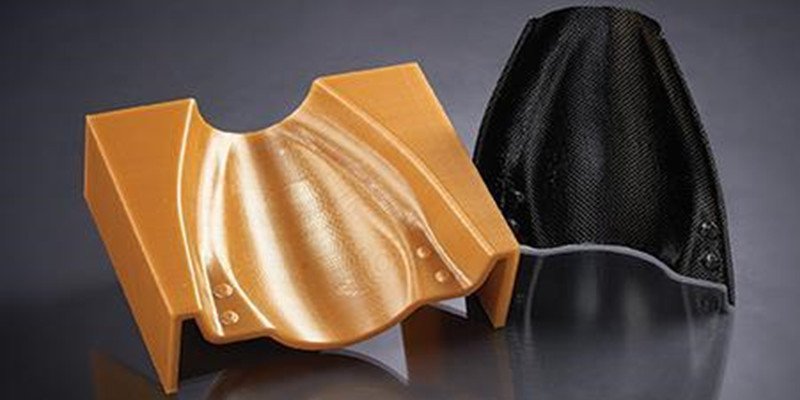
Production Parts and Prototypes
3D printing is first and foremost a prototyping technology, and with ULTEM being one of the best value for money thermoplastics available, it is the clear choice for low-cost, short-line production. It is also a good choice for businesses who wish to sell highly customizable parts for sale to the public.
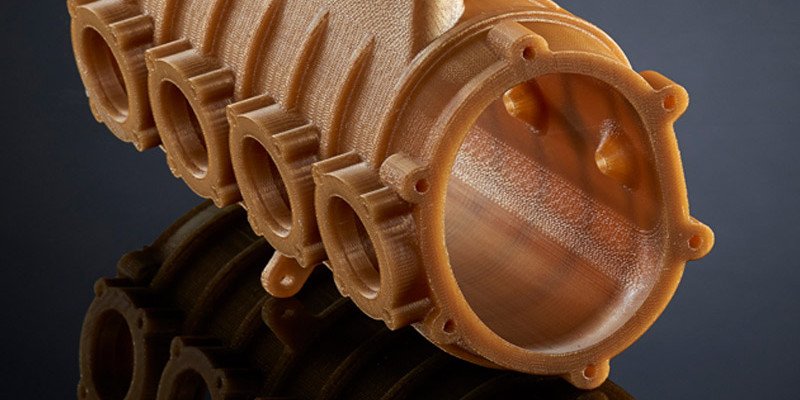
Advantages and Disadvantages of ULTEM 3D Printing
Ultem Filament Benefits
Cheaper than PEEK
3D printing ULTEM filaments are much cheaper than many other thermoplastics like PEEK, while still sharing the same industrial applications. This makes it much more accessible to those on a budget to get into 3D printing thermoplastics.
The cheaper price does not mean a lower quality material. ULTEM is more than capable of holding its own against its competitors when it comes to its utility and applications.
Strong and Durable
While both ULTEM 1010 and ULTEM 9085 are not as strong as PEEK, they are much stronger than the majority of other 3D printing polymer filaments on the market.
ULTEM guarantees a chemically resistant, hardwearing product with a long lifespan, and one that can withstand heat, impact and corrosion without letting you down.
Safe
ULTEM is a non-toxic material, making it safe to use in a range of industries where safety is required such as kitchenware and medicine.
It also has medical applications due to the fact that it is biocompatible, and sterilized ULTEM parts that are implanted into the body will not be rejected or cause adverse health effects.
- We also have a feature story on how 3D printing is being used in the medical sector.
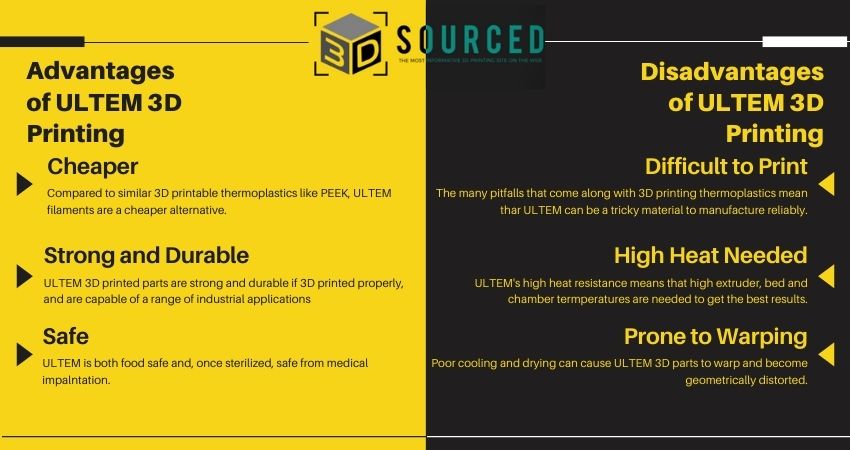
Cons
Difficult to Print
Thermoplastics as a whole are very difficult to 3D print due to warping issues and product shrinkage, and ULTEM is no exception. There are a lot of pitfalls that inexperienced manufacturers can fall into.
Setting the extruder speed too high or using the incorrect temperatures could result in the part printing incorrectly, and ruining your entire project.
High Heat Needed
Printing with ULTEM requires a huge amount of heat to melt the filament sufficiently, upwards of 340°C, which can be an intimidating figure.
Setting the extruder temperature too low can stop the filament from fully melting and causes clogging.
Prone to Warping
The high heat requirements mean ULTEM 3D printed parts need extra aftercare during the cooling process to prevent warping.
Using an oven and cooling over time should help with this, and also dry the part effectively to get the best finish. But it is an easy pitfall for those less knowledgeable.




